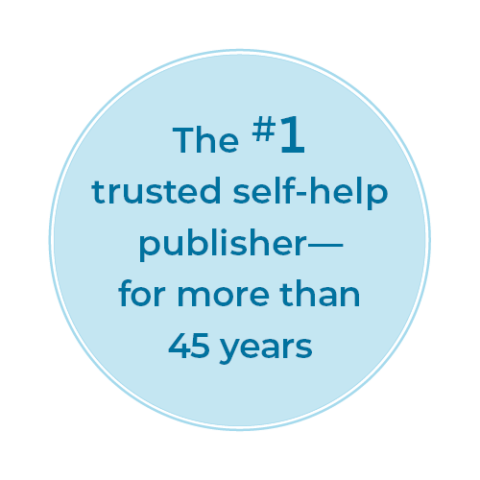Step 1: Conduct an Assessment and Provide Education
The first step of the CBT treatment for bipolar disorder is to conduct an assessment of the person’s symptoms in order to verify that he or she is struggling with bipolar disorder and not some other similar problem. Before beginning treatment, it’s essential to determine whether the person is struggling with bipolar I, bipolar II, or cyclothymia. For this reason, it’s very important for the person to consult with a medical professional as soon as possible. Then, after being stabilized on medication, the person may find it helpful to use CBT skills to maintain a healthy lifestyle.
Once people have been diagnosed with bipolar disorder, it’s important that they understand the basic nature and causes of the disorder (as highlighted above), as well as the basic nature and causes of depression, which is frequently associated with bipolar disorder.
One of the most important and difficult steps during this initial phase is helping the person with bipolar disorder recognize that the illness will be a lifelong struggle. Unfortunately, bipolar disorder does not go away no matter how well a person maintains his or her medication and therapy regimen. In this respect, the disorder is similar to diabetes and other medical illnesses that must be monitored and treated over the course of a person’s lifetime. Therefore, part of the early stages of treatment is helping people accept the fact that they must rely on medication to stabilize their mood, just as insulin helps people with diabetes stabilize their blood sugar levels.
Since bipolar disorder frequently disrupts a person’s family and social relationships, it’s also very important to educate family and friends about the nature of the illness and the roles that they might play in helping to stabilize the disorder. This includes understanding the nature of the illness and the events that trigger manic episodes, and learning how to communicate more effectively.
It’s also important for everyone involved to understand that CBT is an active form of treatment that requires the person with bipolar disorder and his or her loved ones to do work outside of the therapy session.
Step 2: Develop Effective Communication Skills
It has often been observed that frequent highly emotional conversations with others can lead to a person having a manic episode. Therefore, it’s very important that the person with bipolar disorder and his or her family and friends learn to communicate with each other in ways that are more effective and less volatile. This is where effective communication skills can be helpful.
Many people with bipolar disorder have difficulty making requests to get their needs met in fair and reasonable ways. Assertive communication skills can be very effective for making these requests. In addition, problem-solving communication skills are excellent for helping people in the following situations: setting limits with others, listening to others in effective ways, interpreting others’ body language, negotiating with others, and dealing with criticism.
Step 3: Develop Problem-Solving Skills
Often, the third step of the CBT treatment for bipolar disorder is to learn problem-solving skills. Sometimes people with bipolar disorder lack coping skills for handling difficult or uncertain situations. This can lead to feelings of anxiety and hopelessness that then trigger manic episodes. Problem-solving skills can help the person identify and select healthy solutions to difficult, anxiety-provoking situations. The steps to problem solving include defining the problem, outlining the desired goals, brainstorming possible solutions, evaluating the possible consequences, putting the chosen plan into action, and evaluating the results. This is a very effective skill when used alone by the person with the disorder, and it can be even more powerful when used cooperatively with the person’s family and friends.
Step 4: Develop Stress Reduction Skills
Many people experience stress in their daily lives, but for people with bipolar disorder, stress can sometimes trigger manic episodes. This is because stress, particularly chronic stress, takes a very heavy toll on a person’s body, mind, and relationships. Relaxation exercises can help reverse some of these effects, but more importantly, they can also prepare a person to confront the causes of stress in a much healthier way. For example, suppose a woman’s relationship with her husband has been problematic. For the last few years, she has avoided dealing with the conflicts, and as a result she has developed many physical symptoms of stress, such as tight muscles and high blood pressure. Practicing relaxation techniques in a consistent way can help ease these problems. In addition, they can also help if she chooses to address the relationship issues with her husband. Relaxation techniques can prepare a person for confronting stressors and help the person deal with problems in a more effective way.
Typically, relaxation exercises begin with building body awareness to help people scan their bodies for signs of stress and muscles tension.
Next, it’s very important to learn proper breathing techniques. Many people who are under stress breathe in a very constricted way. Some of them breathe very rapidly. Either of these types of breathing can make a person more vulnerable to stress. Learning proper breathing technique, using long, slow breaths, can help a person relax quickly and easily.
Progressive muscle relaxation is also a very important exercise. Many people experience stress as muscle tension. Progressive muscle relaxation helps people relax the entire body. Then, once this basic technique is established, people can learn to relax even more quickly by using cue-controlled relaxation and other rapid relaxation techniques.
Meditation is also helpful for many people. Learning how to stay focused in the present moment is a healthy alternative to being overwhelmed by stress-provoking thoughts. Meditation, or mindfulness, can take many forms, none of which have to be spiritual. People can learn to be mindful of their breathing, to meditate while walking or eating, or to use visualization to meditate.
Effective relaxation also includes developing good nutritional habits and engaging in healthy physical exercise. Therefore, people coping with stress should make time in their lives to address these issues, too.
Visualization techniques use the power of the imagination to help people relax and create mental space for evaluating stressful situations. Techniques such as special-place visualization can help people relax by imagining a safe place in their mind, where they can completely relax.
Step 5: Challenge and Correct Self-Defeating Thoughts
The next step of the CBT treatment for bipolar disorder is to challenge and correct self-defeating thoughts. This is a very important step for three reasons: First, self-critical thoughts can often lead to feelings of sadness, hopelessness, and anxiety, which can then trigger manic episodes. Second, self-defeating thoughts often play a large role in the development of depression. Therefore, this step is at the core of the CBT treatment for depression. And third, self-defeating thoughts often cause a person to stop taking medications. For example, a person might think “Why bother taking them if I’m going to have the problem for the rest of my life anyway?” or “I’m feeling better now, so I don’t have to take my medications anymore.” For all of these reasons, challenging and correcting self-defeating thoughts is a crucial step in the CBT treatment for bipolar disorder.
Automatic thoughts are the most observable form of self-defeating thoughts. These are critical thoughts that people think and say to themselves that sabotage success and happiness. Two examples of automatic thoughts might be “I don’t deserve anything good happening to me” and “Why bother trying? I’m just going to fail.” A person can be either aware or completely unaware of having a thought like this. However, in both cases the result is that the person feels sad or hopeless.
Much of the CBT treatment for bipolar disorder will be spent identifying and reevaluating these types of thoughts. This can be done with the use of a thought record. The thought record helps the person look for evidence that both supports and contradicts these thoughts. Then, most importantly, it helps the person create a more balanced thought. For example, if the person struggling with bipolar disorder had the thought “Why bother trying? I’m just going to fail,” the thought record would offer evidence of this thought being true and examples of it not being true in the person’s life.
The thought record also helps the person identify different types of cognitive distortions, unhelpful thinking styles that generate those automatic thoughts. For example, overgeneralizing involves making broad negative conclusions about life based on limited situations, and minimizing and magnifying involve discounting the positive and enlarging the negative aspects of life.
By evaluating the evidence and cognitive distortions, the goal of the thought record is to help the person find a new, more balanced thought and ease feelings of sadness and hopelessness. In this example, perhaps a more balanced thought would be “Even though I don’t do everything perfectly, I’m still capable of doing most things pretty well.” And instead of feeling excessively sad, such as 8 on a scale of 1 to 10, perhaps this newer thought will help the person feel less sad, say only a 5 out of 10.
As the work on challenging automatic thoughts continues, a person using a thought record will usually begin to notice common themes among his or her thoughts. These themes often point to deeper, more firmly entrenched core beliefs about one’s self that make a person more vulnerable to manic episodes and depression. These core beliefs, often called schemas, include thoughts like “I’m a failure,” “I’m worthless,” and “I’m unlovable.” When these core beliefs are encountered, they too need to be challenged and modified using the thought record and other techniques.
Step 6: Prevent Relapse
Finally, the last step of the CBT treatment for bipolar disorder is preventing relapse after treatment is complete. The key to relapse prevention is for the person to continue using the cognitive and behavioral skills learned in treatment and to recognize the early signs of returning manic and depressive episodes in order to take steps to prevent them. And when needed, people should always consider seeking additional help from medical and mental health care professionals.







